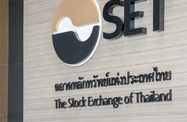With regional integration of the financial services industry drawing closer, analysts are warning Thailand’s banks to strengthen their position at home or risk being swallowed up by rivals once the Association of South-east Asian Nations (ASEAN) Economic Community is launched in 2015.
Building up a presence in overseas markets and merging with domestic competitors have both been suggested as ways in which Thai banks could bolster their resources in preparation for the one-market approach to financial services which ASEAN integration will usher in.
Thailand’s banking sector is currently performing strongly, having posted combined earnings of BT173bn ($5.8bn) in 2012, up 21% on the previous year, according to data issued in January by the Bank of Thailand (BoT). In another encouraging sign, non-performing loans fell to BT254.2bn ($8.5bn) in 2012, down BT11.9bn ($400m) year-on-year (y-o-y) to account for 2.3% of loan activity.
Banks also recorded a jump in lending in 2012, with BoT figures showing loans were up 16% on the previous year. Krirk Vanikkul, a deputy governor of the reserve bank, expects lending to continue rising in 2013. “Banks are ready in terms of capital, liquidity and demand for lending,” he said when announcing the results in mid-January.
However, while the sector is well placed to meet local demand, a report by finance consultancy group Accenture suggested many of Thailand’s lenders could miss out on opportunities to expand regionally, which new banking rules, agreed by the bloc’s central bank governors in 2011, are set to bring.
The new set-up, which falls under the ASEAN Banking Integration Framework (ABIF), will make it easier for lenders to operate in other countries within the zone and buy into local banks across the region. Markets that are considered to be underbanked or offering plenty of potential for growth, such as Indonesia and Myanmar, are generating particular interest among lenders, including Thai banks.
Bangkok Bank, Krungthai Bank, Siam Commercial Bank and Kasikornbank have already opened representative offices in Myanmar, paving the way for them to launch full operations there as the country continues opening up to the rest of the world. A number of Thai lenders have also established a toehold in other ASEAN markets, including Cambodia, Vietnam and Laos, or are looking to do so.
However, despite making preliminary moves towards tapping regional markets, Thai banks generated just 5% of their revenues from overseas operations between 2007 and 2011 compared to 40% notched up by lenders in Singapore and Malaysia.
Richard Lumb, group chief executive of Accenture’s Financial Services practice, said Thailand’s banks should seize the opportunity to further broaden their horizons abroad, pointing out that few European and US banks will be considering such a strategy in the current economic climate.
“For the banking services industry in Thailand, the time to act is now, not in three or five years’ time any more,” he said in early February. “Thai financial institutions need to shift from being potential takeover targets for regional peers to becoming acquirers themselves. They need to position themselves as facilitators in trade across the region, particularly for the Mekong Delta countries.”
Accenture said some of Thailand’s banks may need to consider merging with other domestic lenders if they are to build up the financial base needed for participation on the ASEAN stage. The group said such a move would also help shield Thai banks from other regional lenders, particularly those in Malaysia and Singapore, who could target them for acquisition.
Consolidation looks likely to be on the cards for two of Thailand’s struggling state-owned lenders, although the measure is being driven by a bid to survive rather than expand.
Both the Small and Medium Enterprise Development Bank of Thailand and the Islamic Bank of Thailand are struggling with a heavy burden of non-performing loans that currently make up around 30% of their loan portfolios. A merger between the Small and Medium Enterprise Development Bank of Thailand and the more successful Government Savings Bank (GSB) has been mooted, while the Islamic Bank of Thailand has been linked to the state-owned Krung Thai. However, sceptics warn that such moves risk weakening the two more successful lenders.
While the future of the two banks remains uncertain at present, their plight could help to strengthen the sector as a whole. In late February, the Finance Ministry announced it was working on new regulations for the state banking sector with the aim of boosting transparency.
“The Finance Ministry is drafting a plan to overhaul the supervisory regime for specialised state-run banks, particularly in terms of credit approval procedures, which have lacked transparency and been a primary factor in the high levels of non-performing loans at certain banks,” Areepong Bhoocha-oom, permanent secretary at the ministry said on February 26.
Any tightening of the banking sector’s regulatory regime will help boost Thailand’s fiscal credentials, while also serving to better prepare the country’s lenders for regional integration and possible expansion under the umbrella of ASEAN.

